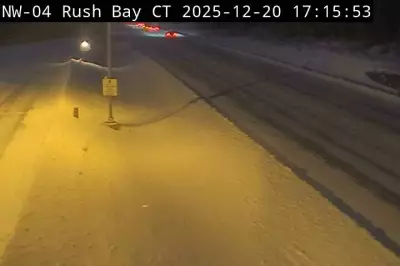
A Canadian worker was tragically killed by two polar bears while working at a remote radar installation in Nunavut, just one day after capturing images of the majestic Arctic predators.
The Fatal Incident at Brevoort Island
Christopher Best was part of a fuel tank cleaning crew working at the North Warning System radar installation on Brevoort Island in Nunavut when the tragic incident occurred on August 8, 2024. The attack came just one day after Best had photographed a polar bear near the same installation on August 7, 2024.
Best had demonstrated interest in the local wildlife, particularly in capturing images of polar bears in their natural habitat. His photography from the previous day shows a polar bear wandering near the critical defense infrastructure where he was stationed for work.
Remote Arctic Working Conditions
The North Warning System represents a chain of radar stations designed to monitor Canadian and American airspace from potential threats. These installations are often located in extremely remote Arctic locations where workers face unique environmental challenges, including encounters with wildlife.
Brevoort Island, where the tragedy occurred, sits in the harsh but beautiful landscape of Nunavut, where polar bears are native inhabitants. Workers at such remote sites must follow strict safety protocols when operating in polar bear territory.
Ongoing Safety Concerns in Northern Operations
This tragic incident highlights the inherent risks faced by workers in Canada's northern territories, where human settlements intersect with wildlife habitats. Polar bears, while protected and culturally significant, can pose serious threats to human safety when encounters occur in remote work settings.
The death of Christopher Best represents one of the rare but devastating outcomes of human-wildlife interactions in the Arctic. It underscores the importance of comprehensive safety measures for all workers operating in polar bear country.
As investigations continue into the circumstances surrounding the attack, the incident serves as a sobering reminder of the challenges facing those who work to maintain essential infrastructure in Canada's most remote and demanding environments.





